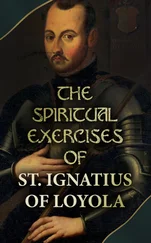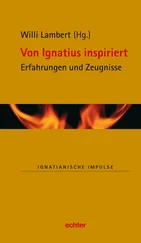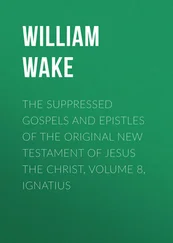Ignatius Donnelly - Antediluvian world
Здесь есть возможность читать онлайн «Ignatius Donnelly - Antediluvian world» весь текст электронной книги совершенно бесплатно (целиком полную версию без сокращений). В некоторых случаях можно слушать аудио, скачать через торрент в формате fb2 и присутствует краткое содержание. Жанр: Старинная литература, на русском языке. Описание произведения, (предисловие) а так же отзывы посетителей доступны на портале библиотеки ЛибКат.
- Название:Antediluvian world
- Автор:
- Жанр:
- Год:неизвестен
- ISBN:нет данных
- Рейтинг книги:5 / 5. Голосов: 1
-
Избранное:Добавить в избранное
- Отзывы:
-
Ваша оценка:
- 100
- 1
- 2
- 3
- 4
- 5
Antediluvian world: краткое содержание, описание и аннотация
Предлагаем к чтению аннотацию, описание, краткое содержание или предисловие (зависит от того, что написал сам автор книги «Antediluvian world»). Если вы не нашли необходимую информацию о книге — напишите в комментариях, мы постараемся отыскать её.
Antediluvian world — читать онлайн бесплатно полную книгу (весь текст) целиком
Ниже представлен текст книги, разбитый по страницам. Система сохранения места последней прочитанной страницы, позволяет с удобством читать онлайн бесплатно книгу «Antediluvian world», без необходимости каждый раз заново искать на чём Вы остановились. Поставьте закладку, и сможете в любой момент перейти на страницу, на которой закончили чтение.
Интервал:
Закладка:
The silence of all other myths of the Pharaonic religion on this head render it very likely that the above is merely a foreign tradition, recently introduced, and no doubt of Asiatic and Chaldean origin.”
To my mind the explanation of this singular omission is very plain. The Egyptians had preserved in their annals the precise history of the destruction of Atlantis, out of which the Flood legends grew; and, as they told the Greeks, there had been no universal flood, but only local catastrophes. Possessing the real history of the local catastrophe which destroyed Atlantis, they did not indulge in any myths about a universal deluge covering the mountain-tops of all the world. They had no Ararat in their neighborhood.
The traditions of the early Christian ages touching the Deluge pointed to the quarter of the world in which Atlantis was situated.
There was a quaint old monk named Cosmos, who, about one thousand years ago, published a book, “Topographia Christiana,” accompanied by a map, in which he gives his view of the world as it was then understood. It was a body surrounded by water, and resting on nothing. “The earth,”
says Cosmos, “presses downward, but the igneous parts tend upward,” and between the conflicting forces the earth hangs suspended, like Mohammed’s coffin in the old story. The accompanying illustration (page 95) represents the earth surrounded by the ocean, and beyond this ocean was “the land where men dwelt before the Deluge.”
He then gives us a more accurate map, in detail, of the known world of his day.
I copy this map, not to show how much more we know than poor Cosmos, but because he taught that all around this habitable world there was yet another world, adhering closely on all sides to the circumscribing walls of heaven. “Upon the eastern side of this transmarine land he judges man was created; and that there the paradise of gladness was located, such as here on the eastern edge is described, where it received our first parents, driven out of Paradise to that extreme point of land on the sea-shore. Hence, upon the coming of the Deluge, Noah and his sons were borne by the ark to the earth we now inhabit. The four rivers he supposes to be gushing up the spouts of Paradise.” They are depicted on the above map: O is the Mediterranean Sea; P, the Arabian Gulf; L, the Caspian Sea; Q, the Tigris; M, the river Pison; “and J, the land where men dwelt before the Flood.”
It will be observed that, while he locates Paradise in the east, he places the scene of the Deluge in the west; and he supposes that Noah came from the scene of the Deluge to Europe.
This shows that the traditions in the time of Cosmos looked to the west as the place of the Deluge, and that after the Deluge Noah came to the shores of the Mediterranean. The fact, too, that there was land in the west beyond the ocean is recognized by Cosmos, and is probably a dim echo from Atlantean times.
MAP
OF
EUROPE
,
AFTER
COSMOS
The following rude cut, from Cosmos, represents the high mountain in the north behind which the sun hid himself at night, thus producing the alternations of day and night. His solar majesty is just getting behind the mountain, while Luna looks calmly on at the operation. The mountain is as crooked as Culhuacan, the crooked mountain of Atzlan described by the Aztecs.
THE
MOUNTAIN
THE
SUN
GOES
BEHIND
AT
NIGHT
CHAPTER V
THE DELUGE LEGENDS OF AMERICA.
“It is a very remarkable fact,” says Alfred Maury, “that we find in America traditions of the Deluge coming infinitely nearer to that of the Bible and the Chaldean religion than among any people of the Old World.
It is difficult to suppose that the emigration that certainly took place from Asia into North America by the Kourile and Aleutian Islands, and still does so in our day, should have brought in these memories, since no trace is found of them among those Mongol or Siberian populations which were fused with the natives of the New World. . . . The attempts that have been made to trace the origin of Mexican civilization to Asia have not as vet led to any sufficiently conclusive facts. Besides, had Buddhism, which we doubt, made its way into America, it could not have introduced a myth not found in its own scriptures. The cause of these similarities between the diluvian traditions of the nations of the New World and that of the Bible remains therefore unexplained.”
The cause of these similarities can be easily explained: the legends of the Flood did not pass into America by way of the Aleutian Islands, or through the Buddhists of Asia, but were derived from an actual knowledge of Atlantis possessed by the people of America.
Atlantis and the western continent had from an immemorial age held intercourse with each other: the great nations of America were simply colonies from Atlantis, sharing in its civilization, language, religion, and blood. From Mexico to the peninsula of Yucatan, from the shores of Brazil to the heights of Bolivia and Peru, from the Gulf of Mexico to the head-waters of the Mississippi River, the colonies of Atlantis extended; and therefore it is not strange to find, as Alfred Maury says, American traditions of the Deluge coming nearer to that of the Bible and the Chaldean record than those of any people of the Old World.
“The most important among the American traditions are the Mexican, for they appear to have been definitively fixed by symbolic and mnemonic paintings before any contact with Europeans. According to these documents, the Noah of the Mexican cataclysm was Coxcox, called by certain peoples Teocipactli or Tezpi. He had saved himself, together with his wife Xochiquetzal, in a bark, or, according to other traditions, on a raft made of cypress-wood (Cupressus disticha).
Paintings retracing the deluge of Coxcox have been discovered among the Aztecs, Miztecs, Zapotecs, Tlascaltecs, and Mechoacaneses. The tradition of the latter is still more strikingly in conformity with the story as we have it in Genesis, and in Chaldean sources. It tells how Tezpi embarked in a spacious vessel with his wife, his children, and several animals, and grain, whose preservation was essential to the subsistence of the human race. When the great god Tezcatlipoca decreed that the waters should retire, Tezpi sent a vulture from the bark. The bird, feeding on the carcasses with which the earth was laden, did not return.
Tezpi sent out other birds, of which the humming-bird only came back with a leafy branch in its beak. Then Tezpi, seeing that the country began to vegetate, left his bark on the mountain of Colhuacan.
“The document, however, that gives the most valuable information,” says Lenormant, “as to the cosmogony of the Mexicans is one known as ‘Codex Vaticanus,’ from the library where it is preserved. It consists of four symbolic pictures, representing the four ages of the world preceding the actual one. They were copied at Chobula from a manuscript anterior to the conquest, and accompanied by the explanatory commentary of Pedro de los Rios, a Dominican monk, who, in 1566, less than fifty years after the arrival of Cortez, devoted himself to the research of indigenous traditions as being necessary to his missionary work.”
There were, according to this document, four ages of the world. The first was an age of giants (the great mammalia?) who were destroyed by famine; the second age ended in a conflagration; the third age was an age of monkeys.
“Then comes the fourth age, Atonatiuh, ‘Sun of Water,’ whose number is 10 X 400 + 8, or 4008. It ends by a great inundation, a veritable deluge. All mankind are changed into fish, with the exception of one man and his wife, who save themselves in a bark made of the trunk of a cypress-tree. The picture represents Matlalcueye, goddess of waters, and consort of Tlaloc, god of rain, as darting down toward earth. Coxcox and Xochiquetzal, the two human beings preserved, are seen seated on a tree-trunk and floating in the midst of the waters. This flood is represented as the last cataclysm that devastates the earth.”
Читать дальшеИнтервал:
Закладка:
Похожие книги на «Antediluvian world»
Представляем Вашему вниманию похожие книги на «Antediluvian world» списком для выбора. Мы отобрали схожую по названию и смыслу литературу в надежде предоставить читателям больше вариантов отыскать новые, интересные, ещё непрочитанные произведения.
Обсуждение, отзывы о книге «Antediluvian world» и просто собственные мнения читателей. Оставьте ваши комментарии, напишите, что Вы думаете о произведении, его смысле или главных героях. Укажите что конкретно понравилось, а что нет, и почему Вы так считаете.












